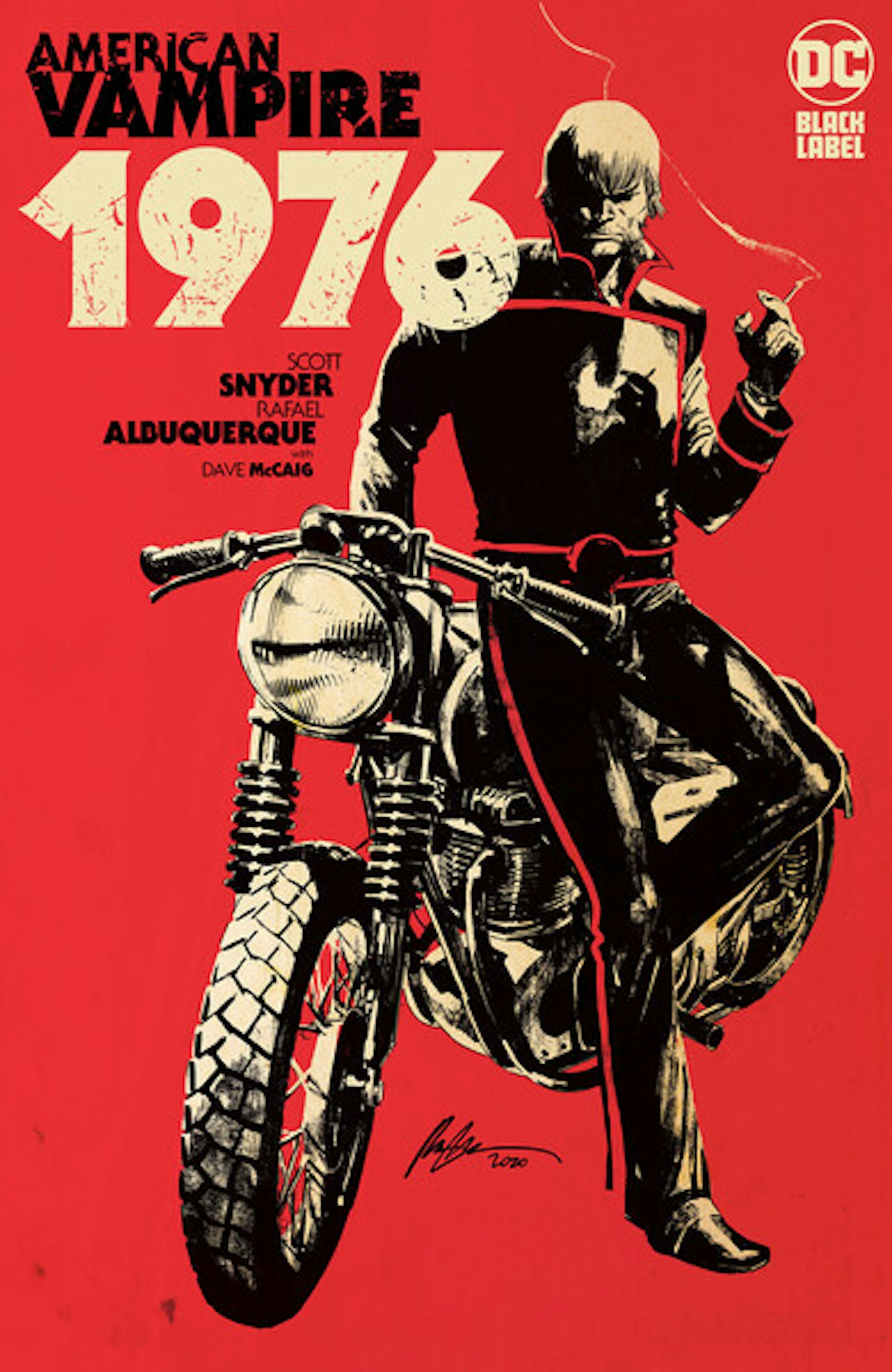A comic’s first issue is typically many things — a jumping-on point for new readers, a reintroduction for veterans to the canon and maybe a chance to establish a new status quo in a concise manner. The first issue of Scott Snyder’sAmerican Vampire 1976 has inherited this unique problem, but manages to accomplish all the stated goals while Rafael Albuquerque’s art and Dave McCaig’s coloring gives every panel a spark of life.
Acting as the first part of the final chapter of Snyder’slong-running original American Vampire (2010–) story, American Vampire 1976 #1 presents readers with Skinner Sweet, a former vampire and current circus daredevil whose long life has begun to weigh on him as he accepts the unfortunate reality of newfound mortality. History is the key word here, As this is the final chapter in a long tapestry of stories in the American Vampire canon, new readers may often be confused by certain reveals that are no doubt meant to thrill longtime readers. Normally, this would be to the story’s detriment. However, all the story’s players are introduced with some flourish and enough dialogue to communicate all we need to know about their current situations, the most amusing of which is Travis Kidd, a vampire hunter who uses a solar lamp and a disco ball to dispatch a horde of club-going vampires.
The book’s primary weakness, though, is this verbosity and exposition dumping. Sadly, this is the double-edged sword of making a point to catch new readers up to the current events of the world and who these characters are. The complaint is valid, but minimal, as Snyder’s dialogue is riddled with the aforementioned bits of excellent characterization which paint a quick but no less detailed picture of his long-running story.
The art team is integral to crafting panels that match Snyder’s gritty script. Albuquerque’s line-work is a good balance between the traditional “comic book” look while also using delicate strokes for smaller details like Skinner’s scruffy beard. McCaig’s colors and shading cast shadows over much of the art, giving everything an appropriately dark feel even in shots during the day, which does wonders for the subject matter.
American Vampire 1976 #1 left me wanting more — I wanted to know who these people are, I wanted to understand what brought them to this point and I wanted to know how they were going to end up. This is most likely the indelible mark of a fantastic first issue and one that manages to push past moments of confusion or wordiness to set in motion the last leg of Snyder’s saga. If you’ve been reading American Vampire thus far, this new chapter will most likely be wholly satisfying, and if you haven’t been reading it up to now, then this issue acts as a litmus test to see if you’d like the series, while still standing on its own as a solid first issue in its own right.






